Public perception of any person with a camera in their hand in and around public landmarks, was forever changed as a result of September 11, 2001.
It didn’t help that the paparazzi contributed to Princess Diana’s death.
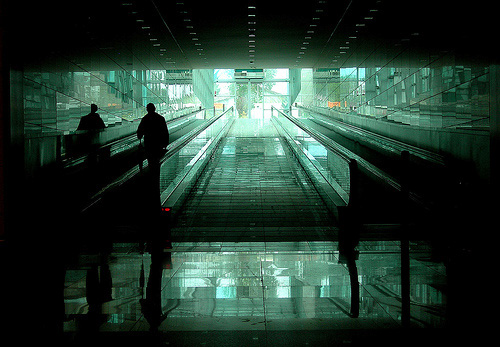
“back home” captured by PictureSocial member zeynep arkok
The hordes of paparazzi, through their dogged pursuit of their quarry, contributed to her untimely demise and in the end, they lost a source of income.
Still, if you’re a people watcher like I am, those changes in attitudes shouldn’t dissuade you from pursuing street or candid photography of people.
Psychology 101
1. To ask or not to ask.
Most folks in public places don’t mind being photographed if you ask.
But sometimes asking first ruins the moment, especially if that something they’re doing is spur of the moment.
Shooting your pictures first and asking for forgiveness afterwards is my advice, if that’s the case.
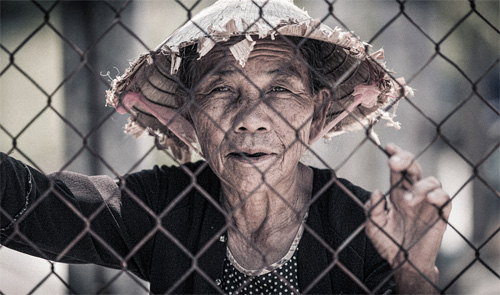
“Farmer, Hoi An, Vietnam” captured by PictureSocial member Thomas Jeppesen
But under no circumstances should you run off when discovered as if you’ve done something wrong. My years as a newspaper photographer have taught me that no two situations are alike.
You probably don’t want to read that, I know. But it’s true.
Here’s why. If you ask first and they say no, then you risk tipping them off.
Then they’ll either be hamming it intentionally for you, or they’ll stop and growl at you.
2. Be a good sport.
Just remember if they’re not happy with your presence with the camera, be a good sport and move on.
Most times if you remain calm, smile, and explain yourself, saying something like, “I took your picture because that looked like such a special moment between your wife/girlfriend and you. I would have asked befora hand but I didn’t want to interrupt your spontaneous display of affection.”
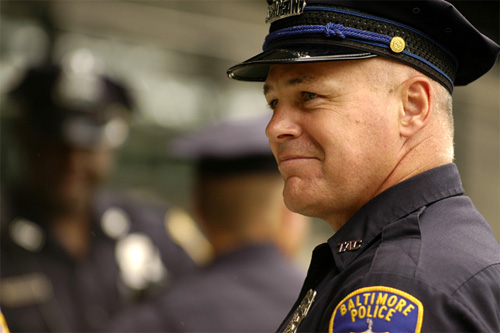
photo by PictureSocial member Christopher Rye
Place yourself in their shoes for a moment and see if you wouldn’t want a great picture of you and the love of your life smooching against a wonderful setting. Take no for an answer unless you’re a paparazzi-in-training.
Never be so insistent on photographing someone to the point they consider you a stalker.
Even if the law says no one should expect privacy in a public place, that doesn’t give you any special right to literally point a camera in a person’s face.
3. Be sure to smile and appear friendly.
When you’re walking around with your camera and a long lens, acting aloof, distant, and avoiding eye contact or sneaking around is bad body language. It suggests you’re hiding what you’re doing, so that’s a no-no.
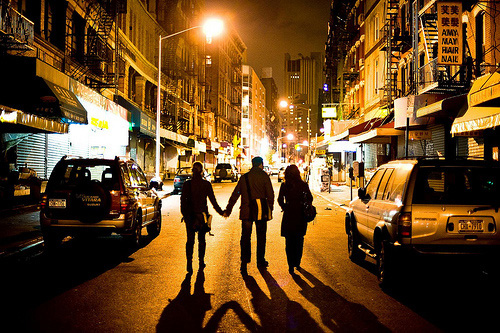
“walking home” captured by PictureSocial member andre stoeriko
You’re engaging in a fun activity, which is not illegal.
Do I need to elaborate about your attire as well? So if your wardrobe is a trenchcoat, sunglasses, and large hat because you’re sensitive to the sun, you might consider a different kind of photography.
With those caveats out of the way, here’s some suggestions on equipment and technique.
Equipment
A telephoto lens and a wide angle.
A telephoto lens is a necessity—something in the range of 80mm to 200mm works well.
The lens even with the lens hood doesn’t look that imposing.
Longer focal lengths like 300mm or longer are of course better, but you will surely stick out like a sore thumb.
Another lens of necessity is a wide angle—something like a 15mm or 16mm if your camera has a magnification factor and doesn’t have a full-size sensor.
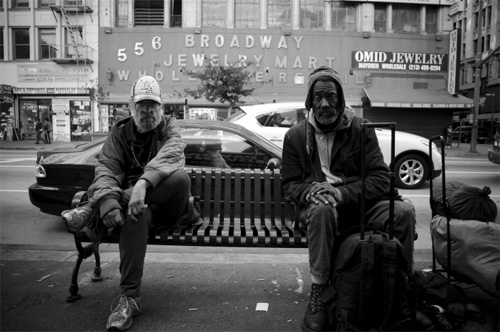
photo by PictureSocial member Mike’s Photography
When you’re in a crowd and you can’t possibly move back, the wide angle lens is more versatile and easier to work, especially if it’s a zoom.
Wide angles also allow you to shoot from the hip without raising the camera to your eye for true clandestine work.
DSLRs work better than point and shoot cameras. But if a point and shoot is all you have, shoot at your longest focal length and at a quality to give you the largest file size. Don’t use the digital zoom.
You want to use your maximum optical zoom and also your quality or lowest compression giving you the largest file size.
Technique
Set your exposure for the lighting conditions beforehand.
This is all part of being ready. When shooting in the streets, you have little or no time to be fiddling with aperture and shutter speeds.
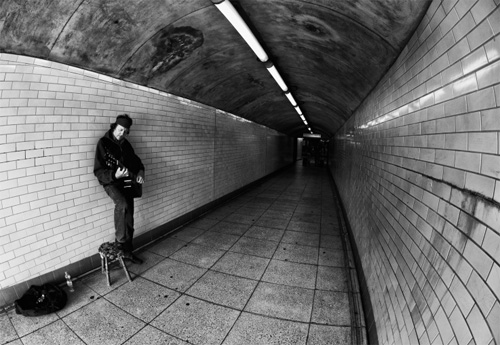
“s i n g m e a s a d s o n g” captured by PictureSocial member Federico
Most people think you don’t need to do this with today’s cameras because of all the automatic modes and autofocusing.
I recommend you set the exposure manually, then all your camera needs to do is focus when press the shutter speeding up the process.
If you set the camera on automatic, the camera has one more operation: deciding what combination of shutter speed and aperture to set while trying to focus on your subject. And that slows it down.
Since you already know you want to emphasize your person and what they’re doing, you’ll be using your widest aperture to blur out the distractions in the background and foreground.
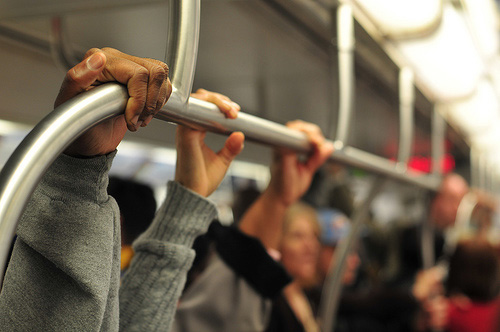
“subway hands” by PictureSocial member andre stoeriko
Remember not be too pushy when taking pictures of people in public.
The law says no one should expect privacy in a public place. But when a worried mother flags down a cop because you’re taking pictures of her and her child in the public park, it’s more than likely you’ll be asked to stop or leave.
About the Author
A Riverside-based freelance photographer, Peter Phun also teaches photography at Riverside City College. He does portraits, weddings, and editorial work. He writes about photography, Macs, and the internet. He also designs websites and is a stay-at-home dad.
Go to full article: Street Photography Tips for the Modern World
What are your thoughts on this article? Join the discussion on Facebook
PictureCorrect subscribers can also learn more today with our #1 bestseller: The Photography Tutorial eBook
The post Street Photography Tips for the Modern World appeared first on PictureCorrect.
from PictureCorrect https://ift.tt/2r1gbEC
via IFTTT






0 kommenttia:
Lähetä kommentti